What is Industrial Hemp?
Summarize

Industrial hemp production is a significant industry, with 45,294 acres planted in the U.S. in 2024. The hemp plant has been used for over 50,000 years to make fiber for textiles and rope. Today, hemp oil is used in foods and lotions. It has little or no THC because it is made from hemp seeds. The industrial hemp plant was developed in response to a federal law limiting THC content to .3% THC on a dry weight basis. It is used in various CBD products. The following sections discuss industrial hemp, including farming, processing, and uses, and how it is different from traditional hemp.
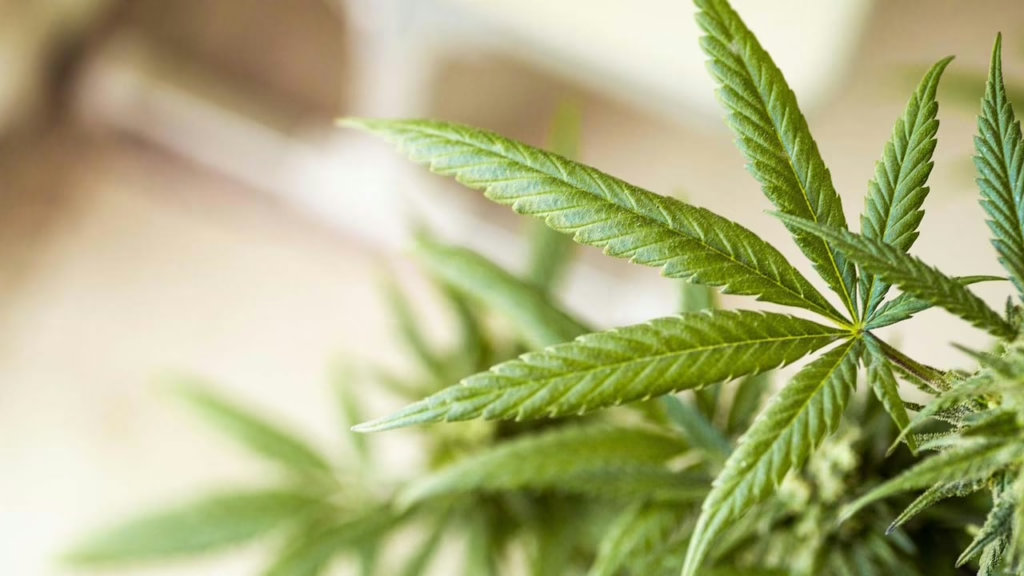
TL;DR (Too Long; Didn’t Read):
Industrial hemp refers to a federally defined Cannabis Sativa variety that is cultivated to contain less than 0.3% THC on a dry weight basis. Its plants are used to make legal CBD products and are non-psychoactive because of the THC limit.
Table of Contents
What Is Industrial Hemp?
The industrial hemp plant is a legally defined hemp plant that is a variety of the cannabis Sativa Plant. It was described in the 2018 Farm Bill (Agriculture Improvement Act of 2018). Industrial hemp is cultivated to contain less than 0.3% THC on a dry weight basis. The THC limit was established as the amount that ensures the THC (Delta-9) amount is not psychoactive.
Hemp plants and marijuana plants are varieties of the cannabis plant. They are the same plant, which is why people get confused. However, there are different species, such as Cannabis sativa and Cannabis Indica.
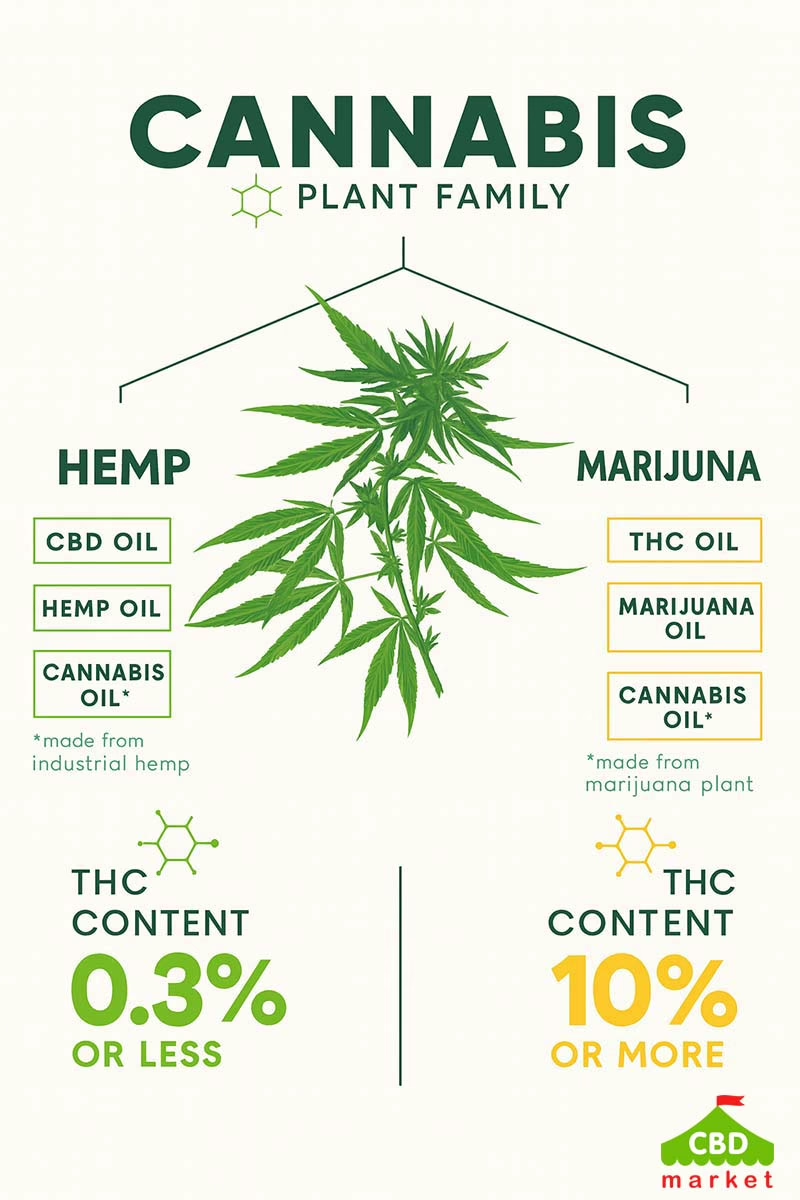
Cannabis plants are classified as hemp or marijuana mainly by their THC content, not by whether they are Cannabis sativa or Cannabis indica. Hemp varieties (which can be sativa, indica, or hybrids) are bred to contain very low levels of THC and may have relatively higher CBD. At the same time, marijuana includes sativa, indica, and hybrid plants cultivated for higher THC with a wide range of possible CBD levels.
Legal Status of Industrial Hemp
The federal 2018 Farm Bill authorized hemp production and removed hemp and hemp seeds from the Controlled Substances List. The law also allows for the transfer of hemp and products derived from hemp across state lines for commercial and other purposes. The law is supposed to be revisited and updated every five years. In 2023, inconsequential changes were made, while industrial hemp laws remained largely intact until recently.
The problem that developed was that the states began passing their own laws, some of which conflict with federal law. This has caused significant confusion in the industry. In addition, CBD producers began including intoxicating synthetic THC isomers, such as Delta-8 and Delta-9, in products, both of which are intoxicating.
In response to the use of intoxicating synthetic THC in CBD products, a new agriculture spending bill was passed and signed into law in November 2025. It intends to close the 2018 Farm Bill loopholes that producers were exploiting. The loophole was created when the Farm Bill specifically mentioned delta-9 THC, leaving it legal to produce synthetic THC. The problem is that it is now too strict.
The new law:
- limits total THC to 0.4 milligrams THC in a container, and the total THC includes delta-9 and THCA
- prohibits synthesized cannabinoids
- effectively bans full-spectrum CBD products because they will contain some THC
It is essential to understand that the new law does not take effect until November 2026. There is a good chance it will be amended before then, once the economic damage it will cause is understood.
Until the new law takes effect in November 2026, federal law considers industrial hemp legal if it contains less than 0.3% THC on a dry weight basis, maintaining current standards.
How Industrial Hemp Is Grown and Processed
Industrial hemp is a hemp plant that meets federal law. It is cultivated to contain the highest possible CBD content while remaining in compliance with federal law. As mentioned, the law says that hemp cannot contain more than 0.3% THC on a dry weight basis.
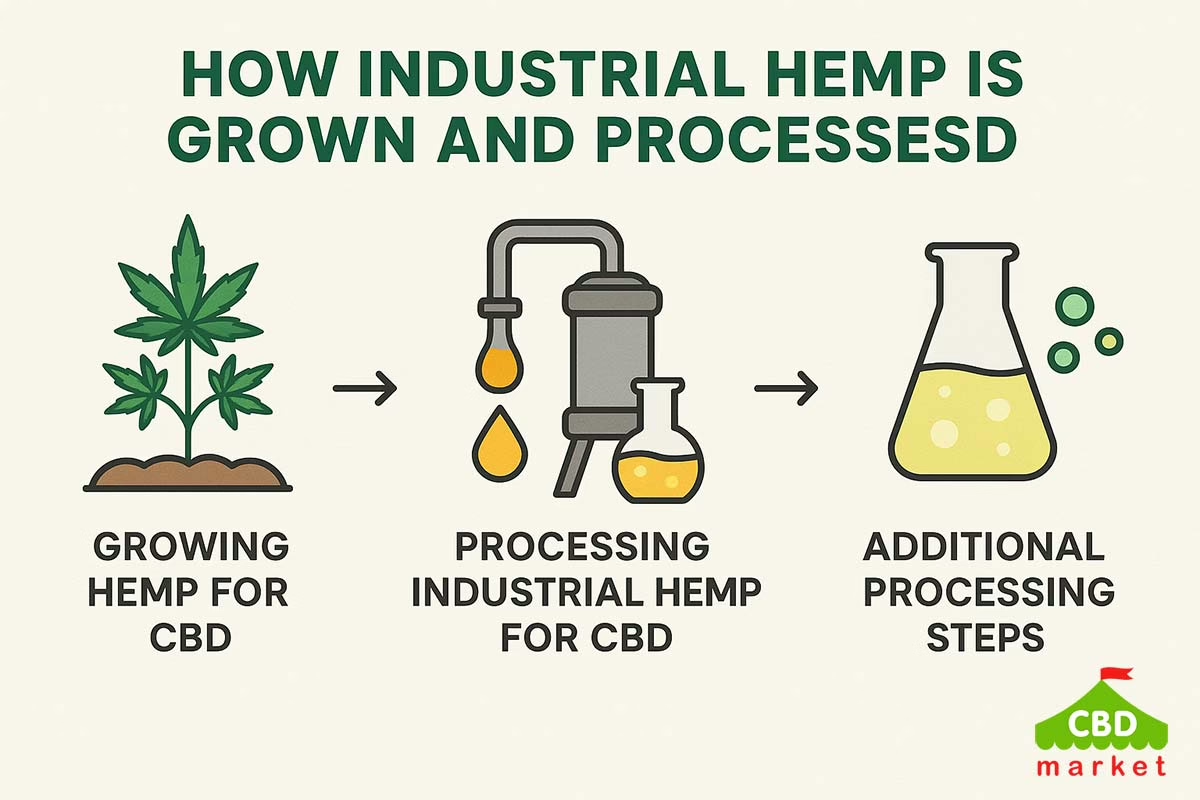
1. Growing Hemp for CBD
As of 2024, industrial hemp farming reached a value of over $445 million in the U.S. The fastest-growing segment was floral hemp (CBD extracted from hemp flowers), but all parts of the hemp plant are used in various products, including seeds, fiber, flowers, and leaves. Hemp plant flowers contain the most CBD, but whole-plant CBD extract is also popular and offers the “entourage effect.”
Farmers grow hemp either in fields or greenhouses, using feminized seeds or clones. Female hemp plants produce the flowers most prolific in cannabinoids. Whether planting fields or growing in an environmentally controlled greenhouse, the risk of pollination is minimized. A pollinated hemp plant will put more energy into producing seeds rather than cannabinoids.
To grow industrial hemp for CBD, the plants are planted in rows to reduce the risk of accidental pollination and weed infestations. It grows best when the soil is loose, well aerated, well drained, and contains the optimal amount of nutrients, such as potassium and phosphorus. Industrial hemp farmers are challenged by planting the seed at the right time of year, in soil with optimal moisture content, and at the best plant density. Many grow organic hemp because pesticides are not applied to the fields.
Since many hemp fields are relatively small, plants are harvested manually. This ensures the desired parts, like the buds, are not damaged. The care that goes into growing high-quality industrial hemp is under-appreciated.
2. Processing Industrial Hemp for CBD
Several processing steps are involved in extracting CBD. There are three main components in a hemp extract: cannabinoid oil, hemp oil, and terpenes. Plus, the extract contains other cannabinoids, including less than .3% THC, minor cannabinoids, flavonoids, and phytonutrients.
The extraction process is the method for obtaining oils from hemp flower, and the most common method is supercritical CO2 extraction. Two additional methods are ethanol extraction and hydrocarbon extraction. A fourth method is water extraction.
There are whole-flower and whole-plant extraction methods. In whole-flower processing, the hemp is shucked, meaning the equipment separates the flowers from the rest of the plant. In whole-plant processing, all the plant material is used.
➔ Supercritical CO2 Extraction
Liquid CO2 enters an extractor and is highly compressed via temperature and pressure. The industrial hemp plant resin particles dissolve in the supercritical CO2, which then becomes a liquid. The solution is placed in a separator that converts the CO2 to gas while the resin particles containing cannabinoids and terpenes settle. The resin-rich extract is then used in products like CBD oil and CBD gummies. The advantages of this process include no solvent residue in the final product, its organic nature, and the production of a high-quality extract.
➔ Ethanol extraction
The ethanol extraction method uses food-grade ethyl alcohol to remove the CBD and other compounds. The winterization process involves chilling the ethanol to 4 degrees F and pumping it into the container of hemp plant extract. Soaking in frigid ethanol removes plant waxes, lipids, and fats from the oil. Once the compounds separate, ethanol is filtered out, or the plant material is removed. The liquid is further processed to remove all ethanol through distillation.
➔ Hydrocarbon extraction
In this process, hydrocarbons, like butane or propane, are pressurized and flushed through the industrial hemp plant material. The cannabinoids and terpenes are dissolved while unwanted materials like chlorophyll are left behind. The solvent and the extract are collected in separate vessels. Heat is applied to evaporate the solvent into a gas, which is then sent to a chilled recovery tank. The solvent condenses back into liquid for reuse. A final step is the removal of residual solvent from the concentrated extract, using a vacuum oven. This is a closed-loop system.
➔ Water extraction
This lesser-used method uses freezing water and agitation to separate trichome heads from cannabis buds and leaves. Trichomes are the hair-like structures on the hemp plant and are responsible for producing cannabinoids, terpenes, and more. The mixture is filtered to collect the trichomes, which are dried and pressed. This method is not as efficient at extracting CBD as using ethanol extraction.
3. Additional Processing Steps
Some producers make CBD distillate, which is produced to create a liquid mixture that increases the final product’s CBD concentration. It is not isolate CBD. It is a highly concentrated liquid CBD extract that will contain THC and minor cannabinoids. Also, CBD producers make three types of CBD extracts:
➔ Full spectrum CBD
The CBD extract is not processed further and contains all of the industrial hemp plant’s compounds.
➔ Broad spectrum CBD
The CBD extract is further processed to remove THC.
➔ Isolate CBD
All compounds are removed to leave only CBD.
Main Uses of Industrial Hemp
All industrial hemp must contain less than .3% THC, but it has many uses besides CBD extraction. What is hemp used for?
✅ Hemp oil is used in food supplements, birdseed, and personal care products like moisturizer and soap.
✅ Fibers are used in textiles, rope, carpet, industrial products, construction, etc.
✅ Leaves are used for composting, mulching, animal bedding, and whole plant CBD extracts.
✅ Seeds are used for dietary supplements, protein powder, food topping, hemp oil, bird feed, etc.
✅ Buds are used to manufacture CBD products, including CBD isolates, oils, tinctures, creams, edibles, etc.
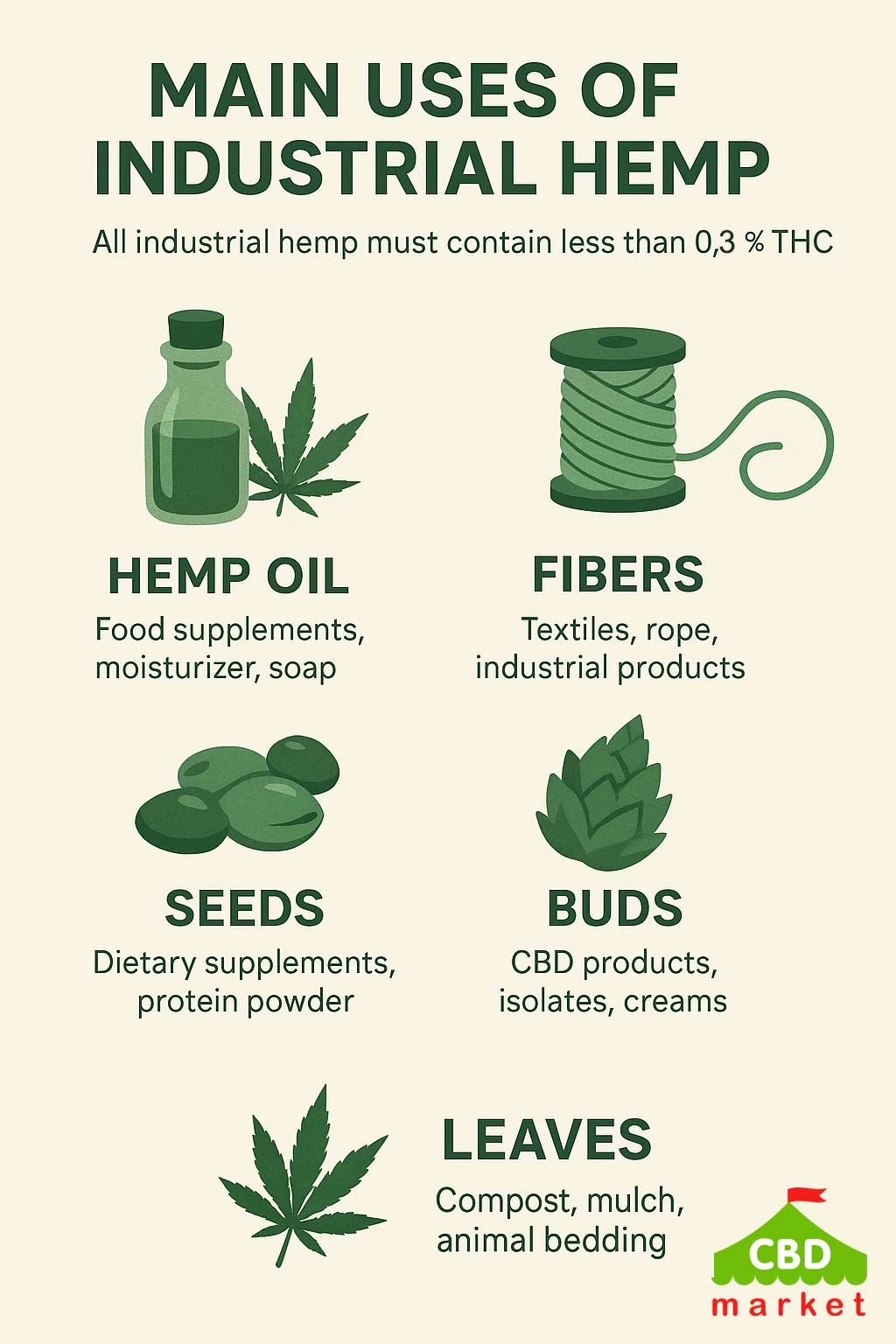
How to Choose Hemp-Derived CBD Products?
When you buy hemp-derived CBD products, you want to ensure they are high-quality and meet legal requirements. The following are some tips.
➥ Review the Certificate of Analysis (COA) prepared by an independent, third-party laboratory. It shows the potency of various cannabinoids, including CBD and THC, and whether they contain contaminants such as heavy metals, pesticides, and solvents. Also, check for THC isomers like Delta-8 and Delta-10.
➥ Many consumers prefer organically grown hemp because it is grown without pesticides.
➥ Choose CBD products sold by reputable companies with a proven track record for honest labeling, product quality, and high customer ratings.
➥ Read the label closely, ensuring the information matches the COA information. Review the ingredients and look for information such as whether it contains allergens, fillers, or artificial ingredients.
FAQs
Is Industrial Hemp the Same as Marijuana?
Hemp and marijuana are both cannabis plants. Industrial hemp is a cannabis sativa cultivar specifically grown to comply with federal law. It has less than 0.3% THC on a dry weight basis.
Can Industrial Hemp Get You High?
Industrial hemp will not get you high. The 0.3% THC limit means there is not enough THC to produce psychoactive effects.
Is Hemp Seed Oil the Same as CBD Oil?
Hemp seed oil and CBD oil are not the same. Hemp seed oil is extracted from hemp seed using a cold-press method. It does not contain any significant amounts of CBD or THC. It is nutrient-rich with proteins, essential fatty acids, and other healthy compounds.
CBD oil is extracted from hemp plant parts, including flowers, stalks, and leaves, and contains cannabinoids and other wellness compounds that include terpenes, flavonoids, vitamins, etc.
Is Industrial Hemp Legal in My State?
The 2018 Farm Bill legalized industrial hemp and allowed interstate commerce. This means industrial hemp is legal in every state per federal law. However, each state has passed laws addressing cannabinoid products. Some rules are more restrictive than federal law. It is important to become familiar with your state’s laws.
Learning the Industry Terminology
There is still a lot of consumer confusion about marijuana vs. hemp vs. industrial hemp. They are all derived from the cannabis plant, but from different types of cannabis plants. Learning the terminology used in the hemp industry is crucial to being a savvy shopper. One of the many purposes of creating the term ‘industrial hemp’ was to give farmers, producers, and consumers a commonly understood term.
Sources
- U.S. Department of Agriculture, National Agricultural Statistics Service. (2025). National Hemp Report. U.S. Department of Agriculture (USDA).
- National Agricultural Law Center. (n.d.). Industrial Hemp – An Overview. National Agricultural Law Center.
- Brooks, R. (2025). Reviving Hemp: Economic Boon or Passing Trend? AgWeb / Farm Journal.
- Bamka, W., & Komar, S. (2019). Introduction to Industrial Hemp – Basic Production Agronomy (FS1312). Rutgers Cooperative Extension, New Jersey Agricultural Experiment Station (NJAES).
- LabTech Srl. (n.d.). Cannabis Extraction Methods. LabTech Srl.
- Szalata, M., Dreger, M., Zielińska, A., Banach, J., Szalata, M., & Wielgus, K. (2022). Simple Extraction of Cannabinoids from Female Inflorescences of Hemp (Cannabis sativa L.). Molecules.
Share this post


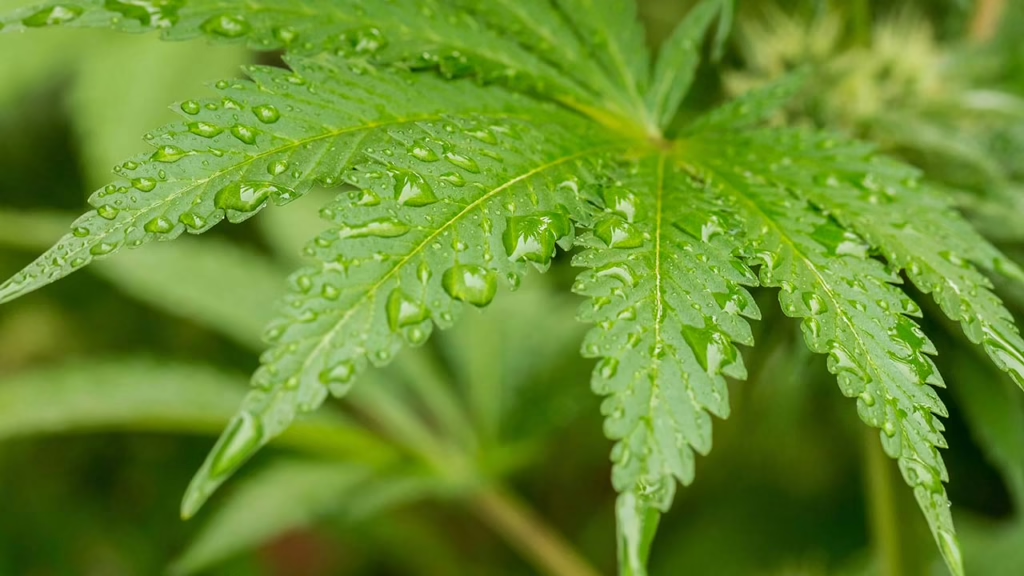
0